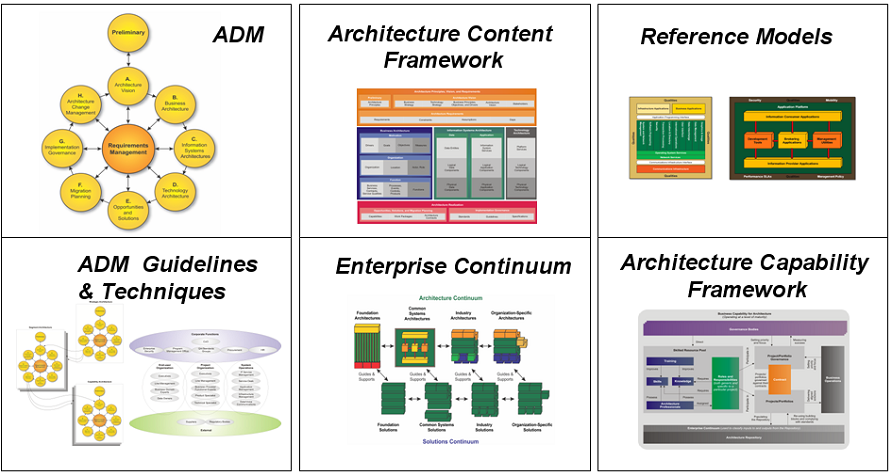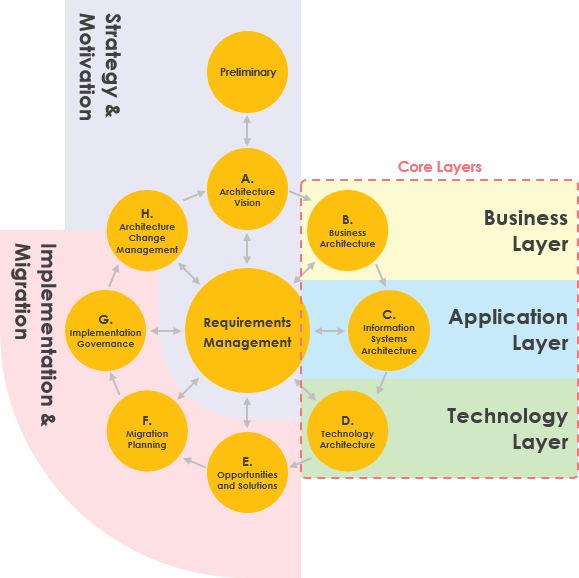The Open Group Architecture Framework, or TOGAF®, isn’t just a catchy acronym; it’s a dynamic tool that has been guiding the development of enterprise architecture since its inception in 1995. If you’ve got 10 to 13 minutes to spare, I’ll walk you through the essentials.
TOGAF® serves as a guiding light for organizations, offering a structured approach to shaping their information technology architecture. Born from the Technical Architecture Framework for Information Management (TAFIM) of the US Department of Defense, it has evolved into its current version, TOGAF® 9.2, available freely on The Open Group website.
This framework operates at four crucial levels: Business, Application, Data, and Technology. By emphasizing modularization, standardization, and leveraging proven technologies, TOGAF® provides a high-level blueprint for design.
The journey of TOGAF® from a Technical Architecture methodology to a robust Enterprise Architecture framework is marked by milestones such as TOGAF® 7 and TOGAF® 8. The latest version, TOGAF® 9.2, is the go-to framework for 80% of Enterprise Architects, boasting a whopping 16,000 out of 22,900 certified individuals under TOGAF® 9.1.
TOGAF® comprises key components like the Architectural Development Method (ADM), ADM Guidelines and Techniques, Architecture Content Framework, Reference Models, Enterprise Continuum, and the Architecture Capability Framework. Together, they form the robust structure of this architecture framework.

Within TOGAF® 9.1, four architectural domains offer specialized insights:

- Business Architecture: Encompassing business strategy, governance, organization, and process adaptation.
- Applications Architecture: A blueprint for deploying application systems aligned with business goals and organizational frameworks.
- Data Architecture: Defining data storage, management, and maintenance, including logical and physical data models.
- Technical Architecture: Describing necessary hardware, software, and IT infrastructure for developing and deploying business applications.
Implementing TOGAF® requires a strategic approach. Starting with the business strategy and direction, organizations must customize TOGAF® to meet their specific needs. Lean management principles can enhance this phase by emphasizing value-driven deliverables, avoiding unnecessary sign-offs, and fostering continuous improvement.
The latest iteration, TOGAF® 9.2, brings significant changes and improvements. Restructuring TOGAF into a core and additional guides forms the TOGAF Body of Knowledge. Terminology refinement aligns with standards such as ISO/IEC/IEEE 42010:2011. Notably, the business architecture component of TOGAF® sees enrichments with the incorporation of business capabilities and value streams.
Business Capabilities: While not entirely new in TOGAF®, business capabilities receive enhanced focus. Distinguishing between capabilities and business capabilities, the framework emphasizes identifying, categorizing, and decomposing the business capabilities crucial for delivering value. A business capability map provides an independent view of the business, facilitating discussions about necessary changes.
Value Streams: A novel addition to TOGAF®, value streams represent end-to-end value-adding activities that create results for stakeholders. Breaking down activities within the organization, value streams provide context for business capabilities, enhancing stakeholder communication. The result is represented in a value stream stages catalog, fostering easy communication with business stakeholders in familiar terms.
TOGAF® 9.2 stands as a powerful framework, adapting to the evolving needs of enterprise architecture and emphasizing value-driven, iterative approaches for successful implementation. So, whether you’re a seasoned Enterprise Architect or just diving into the world of IT architecture, TOGAF® is a name worth knowing.

